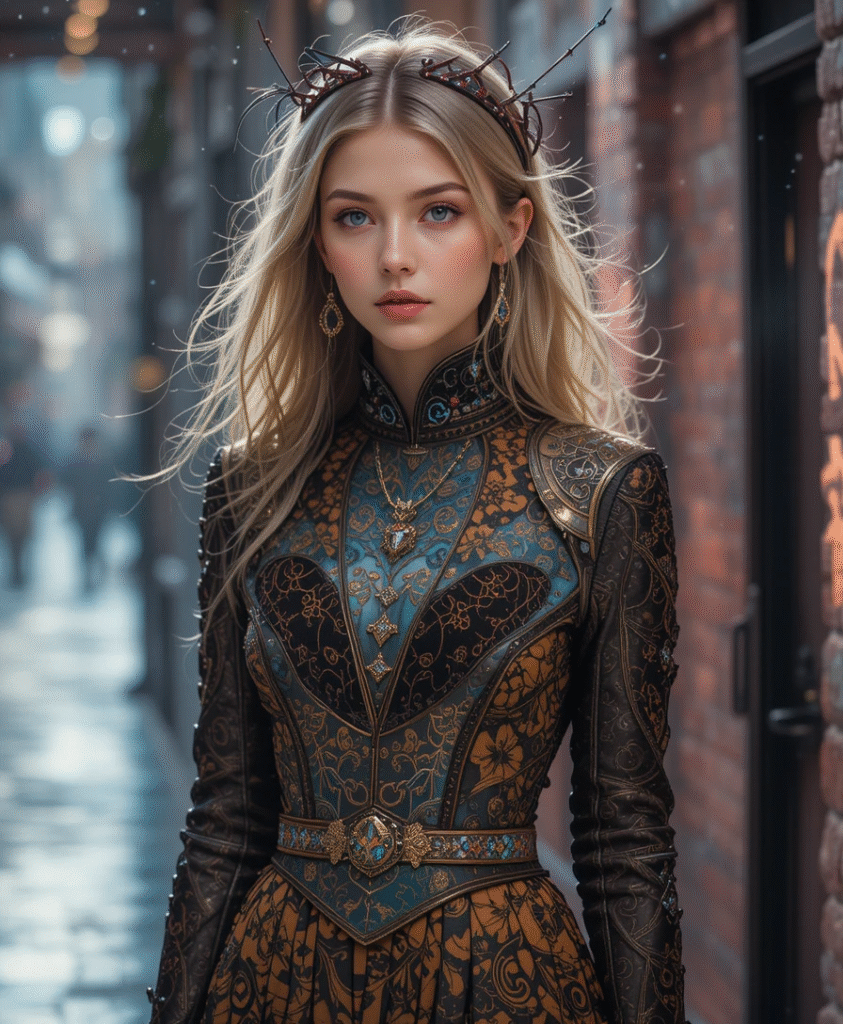Fashion has always been a reflection of time—whether it’s the influence of an era, the response to cultural shifts, or the seasonal cycle of trends. But what if clothing itself could embody the passage of time? Imagine garments that don’t simply remain static but transform, adapt, and evolve alongside the wearer’s physical, emotional, and environmental changes. This is the vision of temporal fashion—a design philosophy and technological innovation where clothes are dynamic, living objects rather than fixed artifacts.

From Static Wardrobe to Living Wardrobe
Traditionally, fashion is designed as a finished product. Once created, its form, size, and color remain largely unchanged, aside from natural wear and tear. Temporal fashion flips this concept: garments are processes rather than products. They may change color with age, reshape as bodies grow or shrink, or morph functionality based on climate conditions.
This shift is not just aesthetic—it’s philosophical. Instead of buying something that will inevitably be replaced, the wearer invests in a garment with a life cycle that parallels their own. In a way, the clothing becomes a personal narrative, recording the passage of time in visible, tangible ways.
The Drivers of Temporal Fashion
The rise of temporal fashion is being driven by three interconnected factors: technology, sustainability, and personalization.
1. Technological Innovation
Advanced materials science has introduced fabrics embedded with shape-memory polymers, color-changing dyes, and responsive fibers. These allow clothing to:
- Expand or contract depending on body changes.
- Alter insulation in response to temperature shifts.
- Display dynamic patterns triggered by light, heat, or movement.
Smart textiles, powered by micro-sensors, can even adjust design elements autonomously—tightening in cold weather, loosening during heatwaves, or subtly shifting hues to match mood or setting.
2. Sustainability Pressures
Fast fashion’s environmental impact has become impossible to ignore. The fashion industry produces over 92 million tons of waste annually, with clothing often discarded after minimal use. Temporal fashion offers a direct solution: if a garment evolves with the wearer’s needs, it reduces the need for replacement.
For example:
- A single jacket could last decades by reshaping itself for different climates and personal styles.
- A dress could shift from formal to casual through texture and cut transformations—reducing the need for multiple separate garments.
This not only cuts textile waste but also redefines the ownership model, promoting long-term relationships with clothes.
3. Personalization Trends
Modern consumers want more than off-the-rack—they want something theirs. Temporal fashion makes personalization an ongoing process. Instead of choosing a static design, the wearer collaborates with time to shape the garment’s final form.
Imagine:
- A shirt that starts with a neutral base color but gradually absorbs and integrates pigments from sunlight exposure unique to your geographic location.
- Jeans that record movement patterns and adapt their fade and texture accordingly, creating a “wear map” as personal as a fingerprint.
Designing for Change
Creating clothes that evolve over time is both an artistic and engineering challenge. Designers must consider multiple states of the garment, rather than just the initial presentation.
Key design considerations include:
- Material Longevity – Fabrics must withstand repeated transformations without degradation.
- Aesthetic Evolution – Changes should feel intentional, not like accidental wear.
- Repairability – Components should be upgradable or replaceable to extend garment life.
- Ethics of Technology – Smart garments must respect privacy if they collect biometric or environmental data.
Examples of Temporal Fashion Concepts
- Color-Morphing Outerwear
- Jackets infused with thermochromic dyes that darken in the sun for UV protection and lighten indoors.
- Shape-Adaptive Footwear
- Sneakers with soles that alter thickness based on gait analysis, improving comfort over years of use.
- Mood-Responsive Dresses
- Garments integrated with micro LEDs or fiber optics that subtly shift shade according to heartbeat or skin temperature.
- Memory-Woven Scarves
- Fabrics that retain folds and creases as “memories,” forming unique patterns that document moments in the wearer’s life.
- Life-Stage Wardrobes
- Outfits that expand from adolescence into adulthood, adjusting proportions without losing style integrity.
Cultural Implications
If temporal fashion becomes mainstream, it could transform how we think about clothing ownership, identity, and self-expression.
- Wardrobe Minimalism – Fewer garments could serve more purposes, making fashion more about experience than accumulation.
- Emotional Attachment – Clothes would become keepsakes, chronicling personal history—akin to a wearable diary.
- Fashion as a Relationship – Instead of discarding clothes, wearers would nurture them, watching them “grow” as one might with a plant or pet.
Challenges and Criticisms
While exciting, temporal fashion faces hurdles:
- Cost Barriers – Advanced materials and embedded technology are expensive, potentially limiting accessibility.
- Maintenance – Clothing that changes over time may require specialized care or updates.
- Over-Complexity – Not all consumers want “living” clothes; some prefer simplicity and predictability.
- Tech Waste Risks – If electronics are embedded, e-waste could become a concern unless recycling is built in.
A Future Wardrobe Scenario
Imagine waking up in 2040:
- You slip on your temporal jacket, which recognizes the brisk morning and automatically tightens its weave to retain heat.
- As you walk into the sun, the fabric shifts to a lighter shade, reflecting glare.
- That evening, you attend a dinner party—the same jacket subtly re-drapes itself into a sleek silhouette.
- Years later, the same garment has developed a patina unique to your lifestyle, carrying the marks of countless days, places, and emotions.
The jacket is no longer just a jacket—it’s a history, a companion, and an evolving piece of you.
Conclusion: Fashion that Lives
Temporal fashion challenges the age-old idea of clothing as static. Instead, it presents garments as living, adaptive entities—mirroring not only environmental changes but also the shifting narratives of the people who wear them.
In a world searching for sustainability, deeper personal meaning, and technological innovation, temporal fashion stands as a bridge between artistry and science. It reminds us that fashion isn’t just about looking good in the present—it’s about carrying the past, adapting to the future, and making every moment in between wearable.